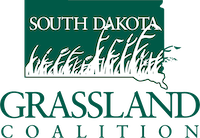Have you ever found money?
I lost a $20 bill one time and found it under the couch cushion several months later. Since it was my money it was nice to get it back. I once found a $10 bill on the street. No one was around so it became mine. That was a net gain to me. Flash grazing in the spring is kind of like both of these scenarios.
When I first came to South Dakota over 20 years ago, I conducted a clipping study at our Cottonwood and Antelope Research Stations to observe regrowth of mixed-grass prairie from light (25%) or moderate (50%) defoliation in May, June, July, and August and compared that to a winter only clipped plot. What I found was that the plots clipped in May at 25% utilization had the same amount of biomass, two years out of three, at the end of the year compared with the plots that were defoliated in the winter. The figure to the right doesn’t include the weight of the forage removed in the clipping (which would make the graphs look better for total forage produced compared to the Winter only plots). Regardless, this meant that there was free forage available if I could somehow graze it early and then let it recover. Hence, the idea of “flash grazing” or moving cattle very fast through a pasture to limit their grazing to just the very top of the plant. This is easier said than done. In 2007, I attended a grazing tour at Bill Slovek’s place. The neat thing I learned from Bill was that he set up water and portable windbreaks in every pasture so that he could graze winter pastures in the spring and vice-versa. Bill confirmed what I was hoping for, that you could actually “flash” graze through winter pastures (maybe a day or two per pasture) to capture that “free” grass.
Source: SDGC Newsletter


